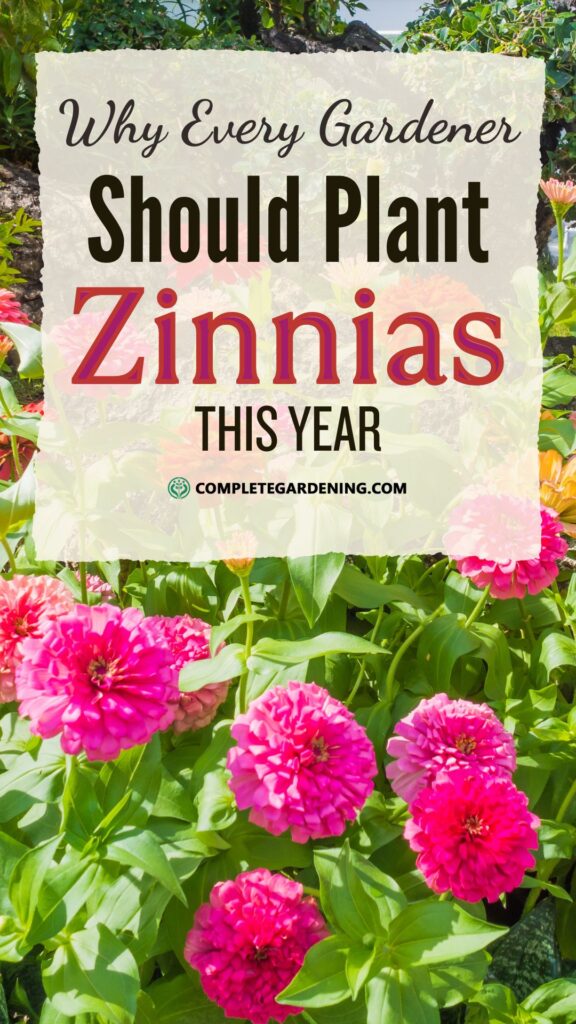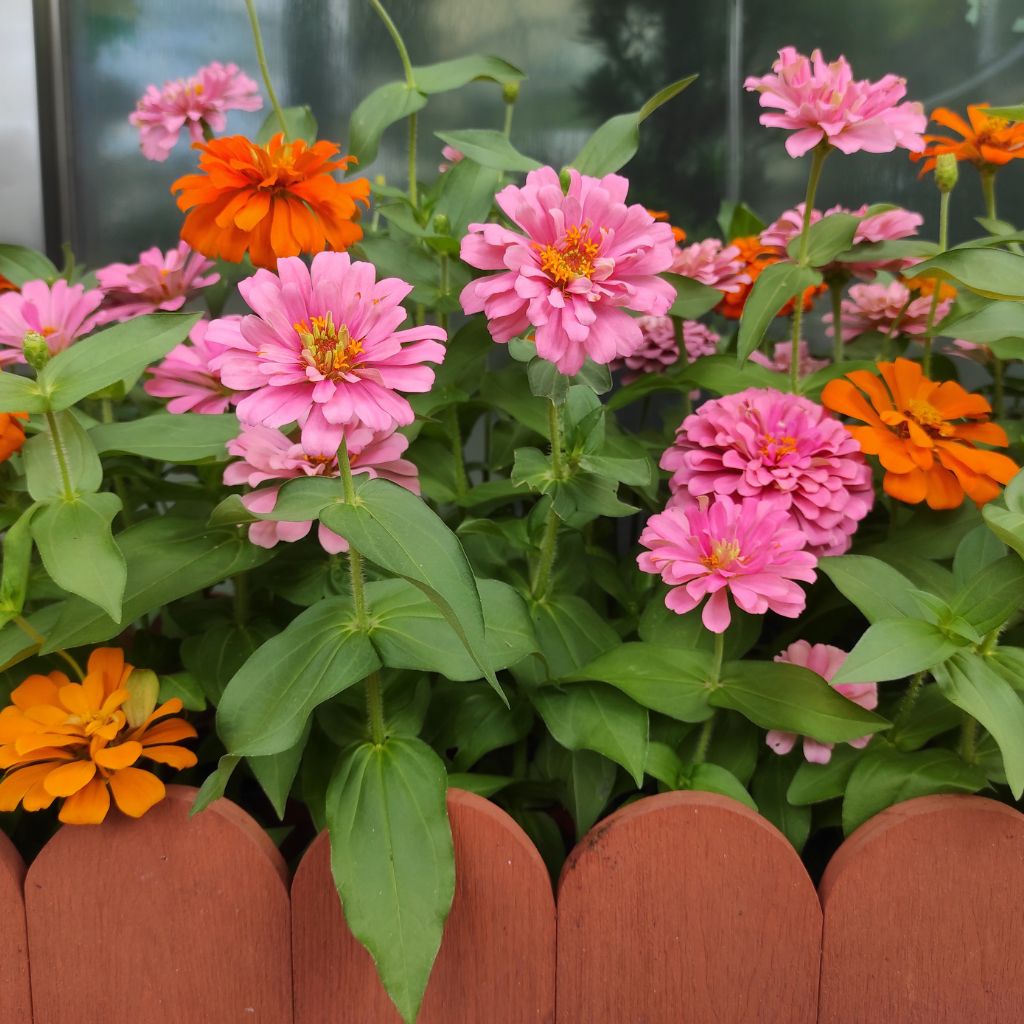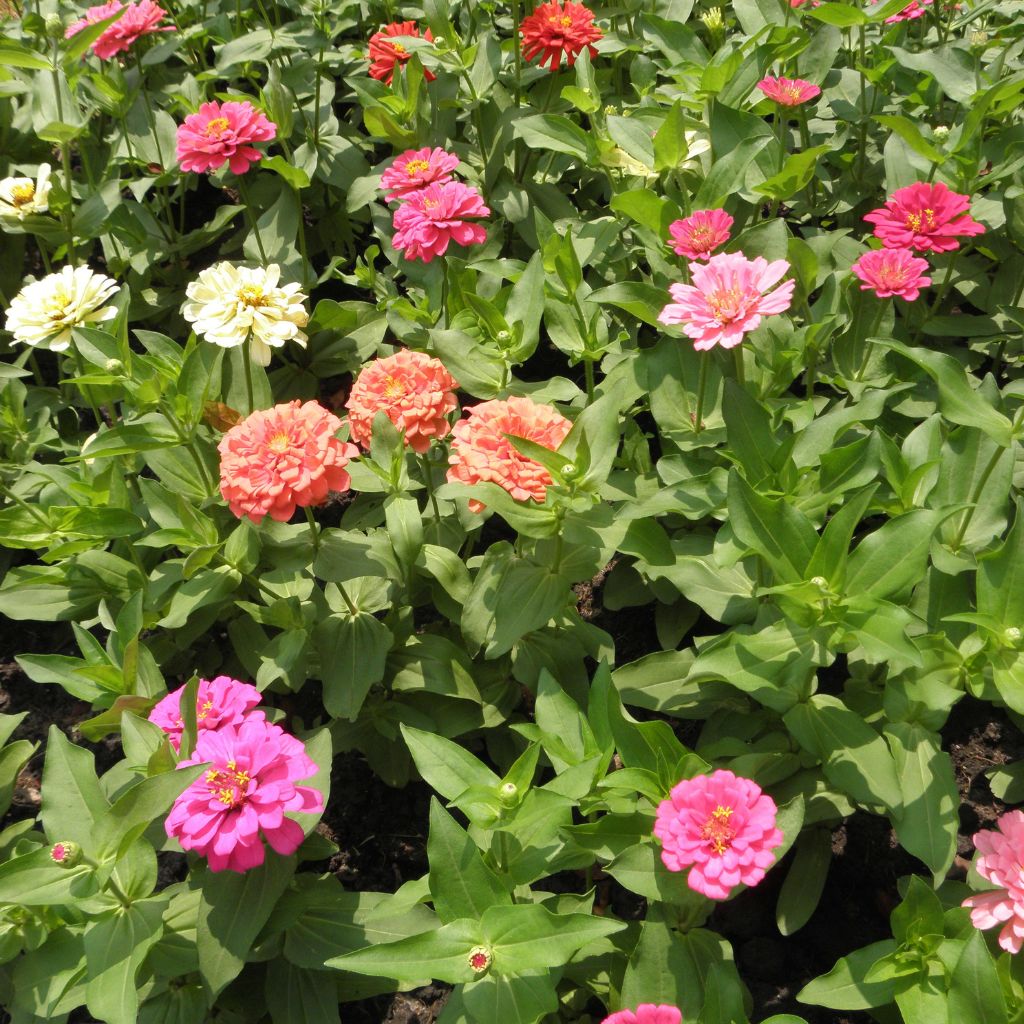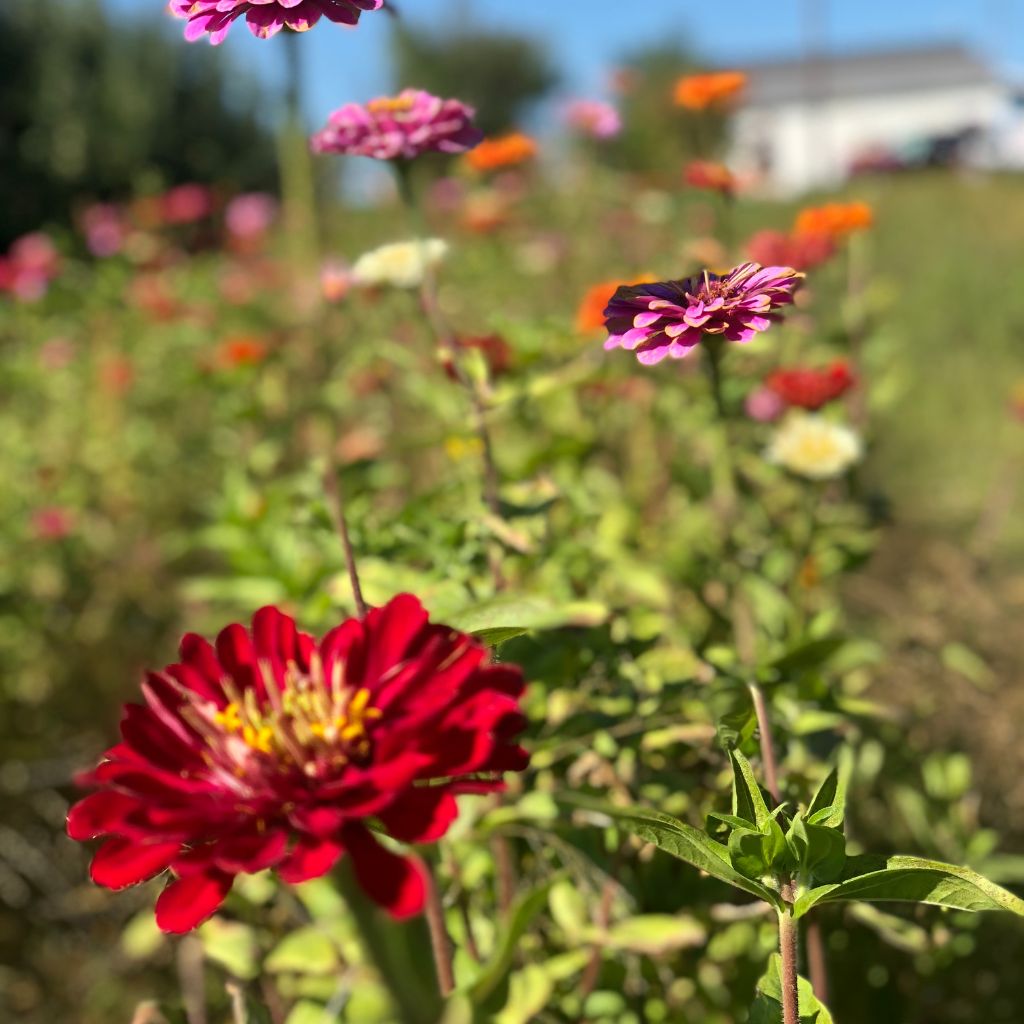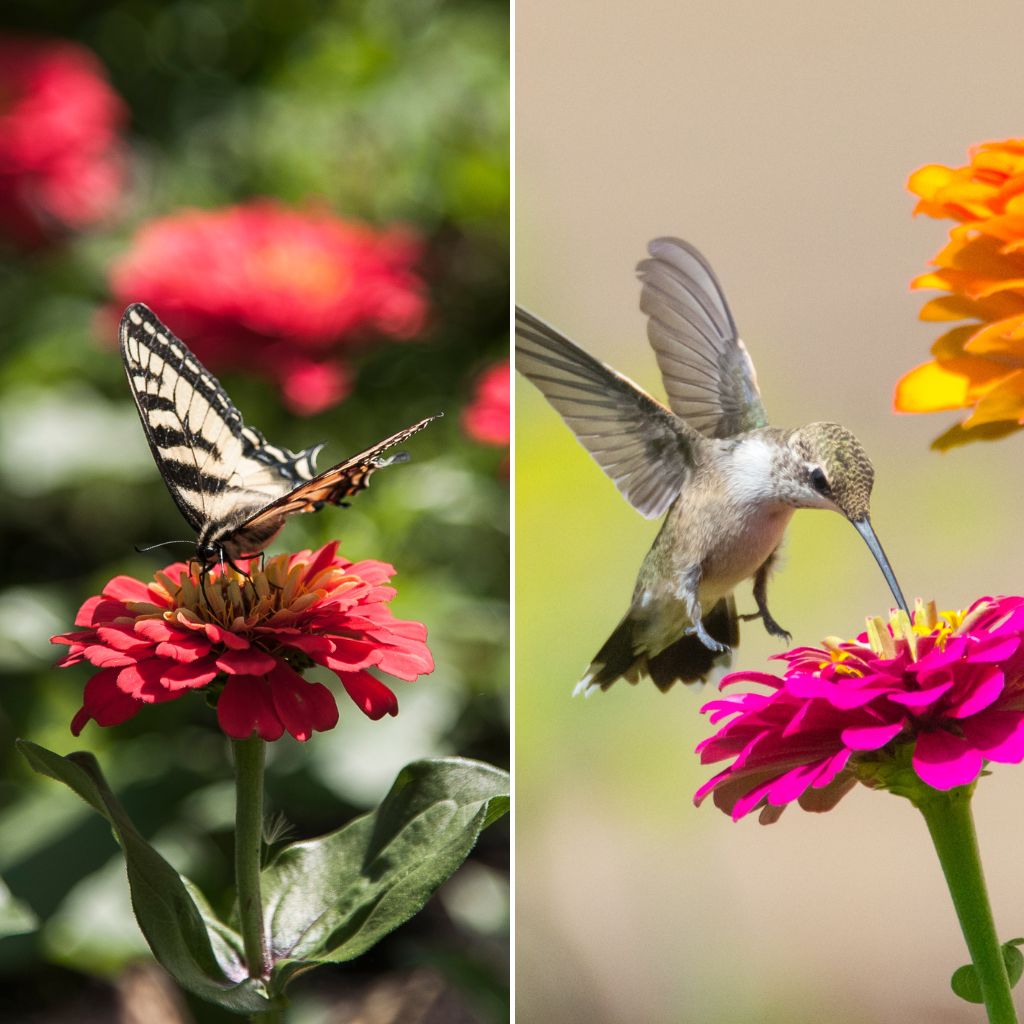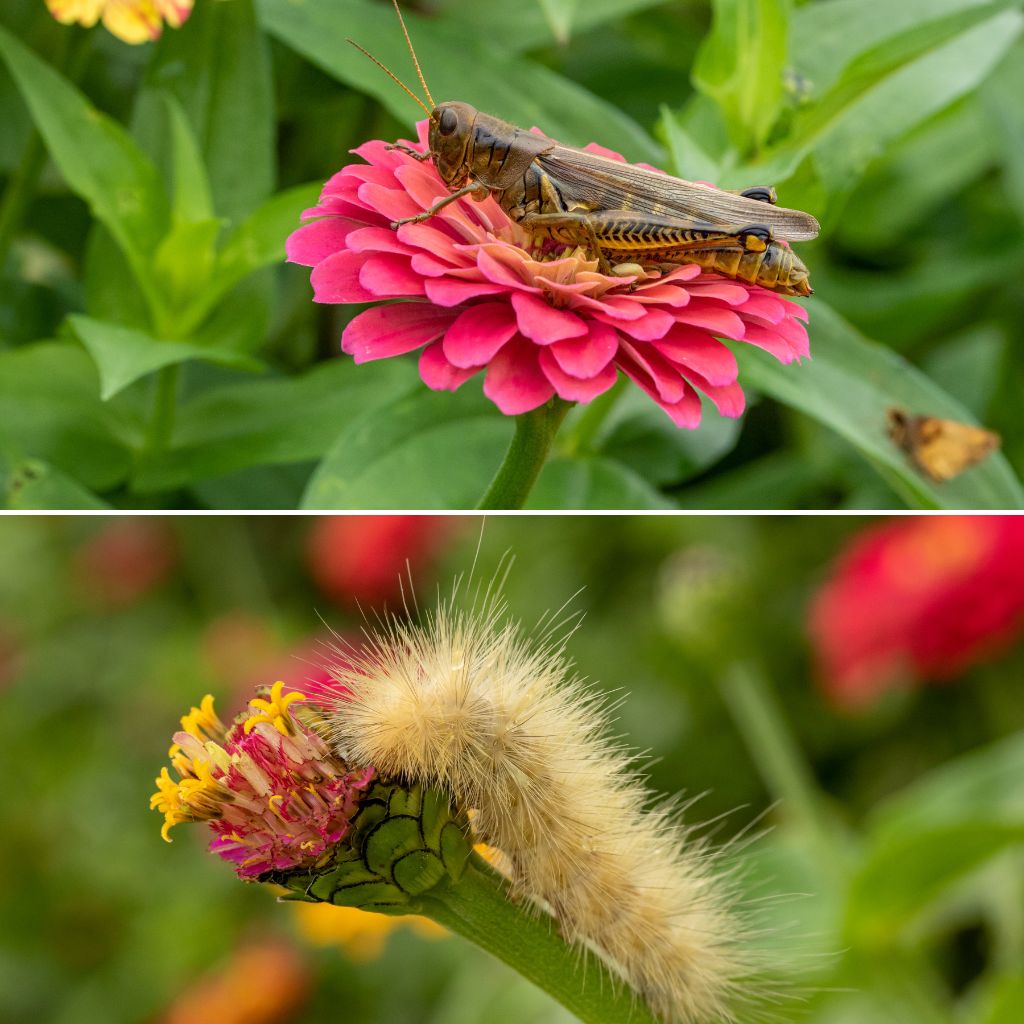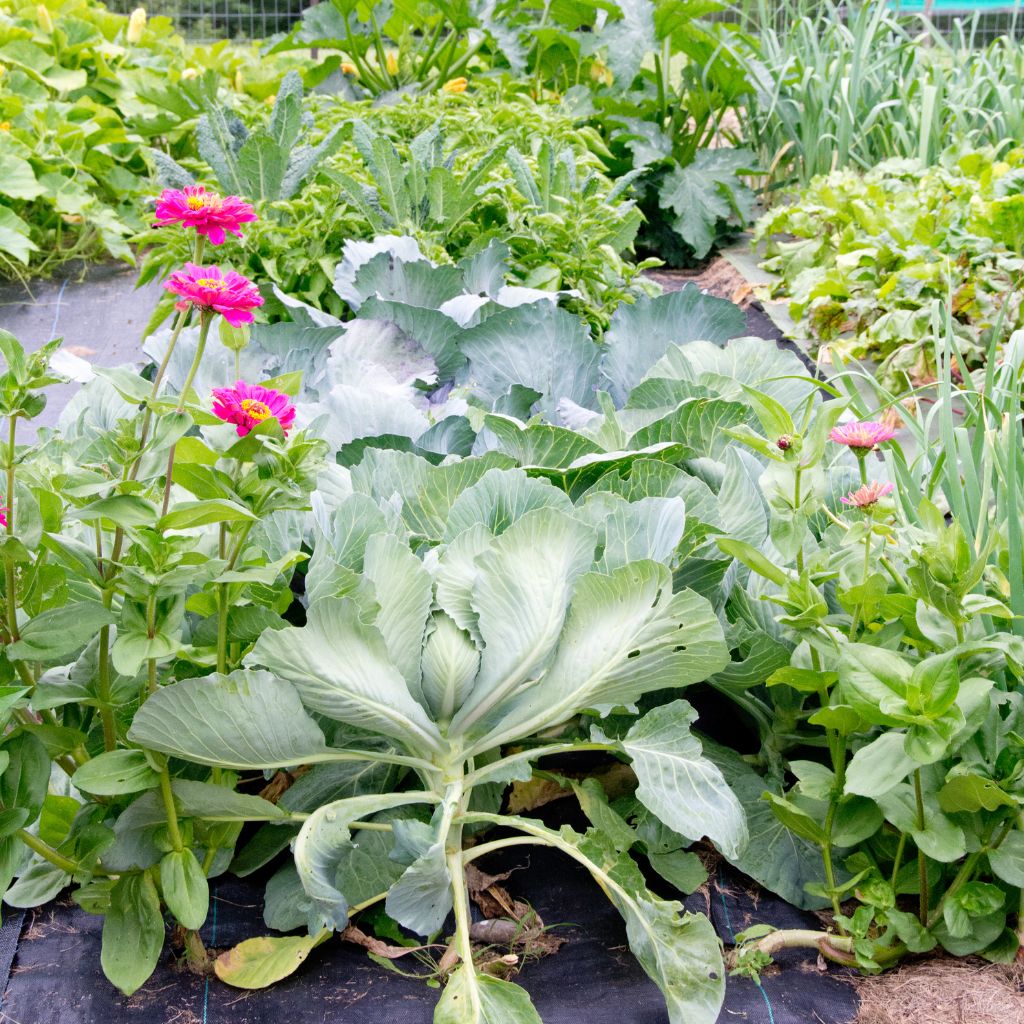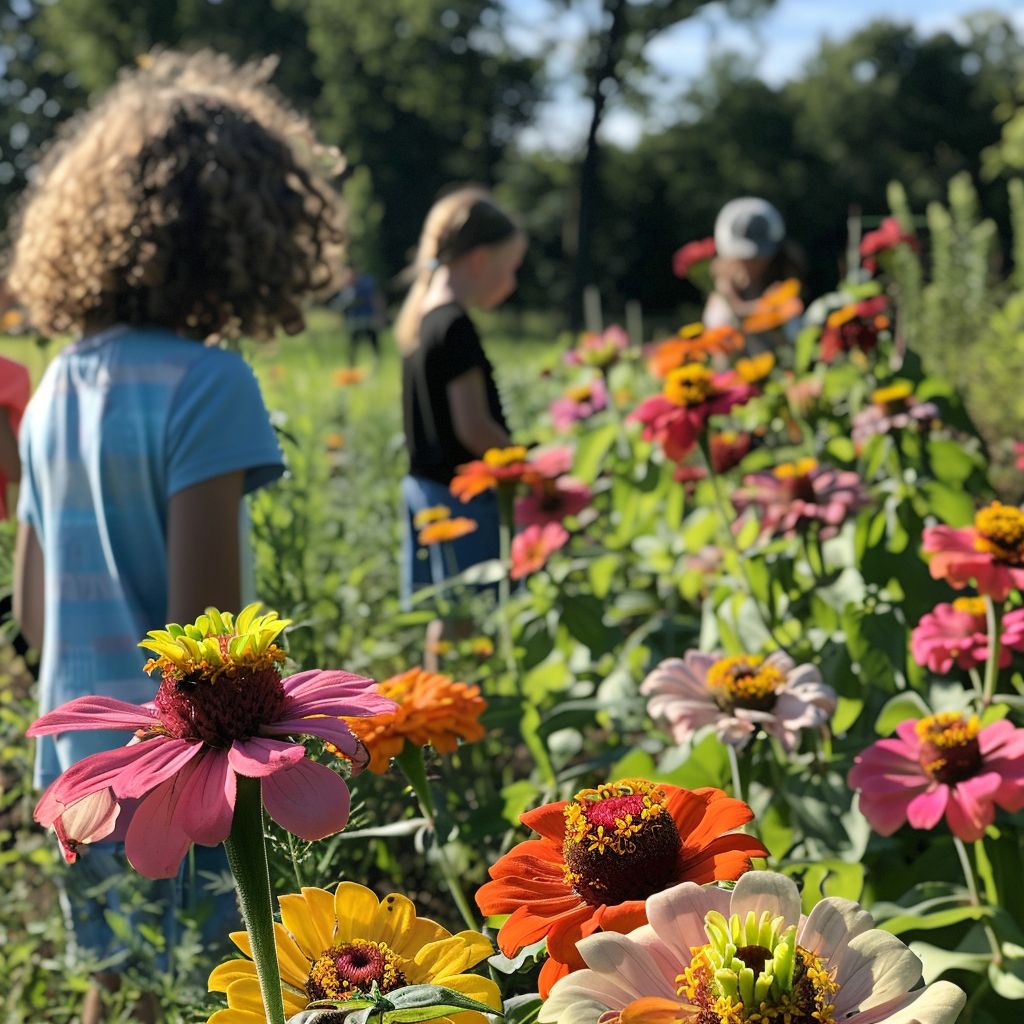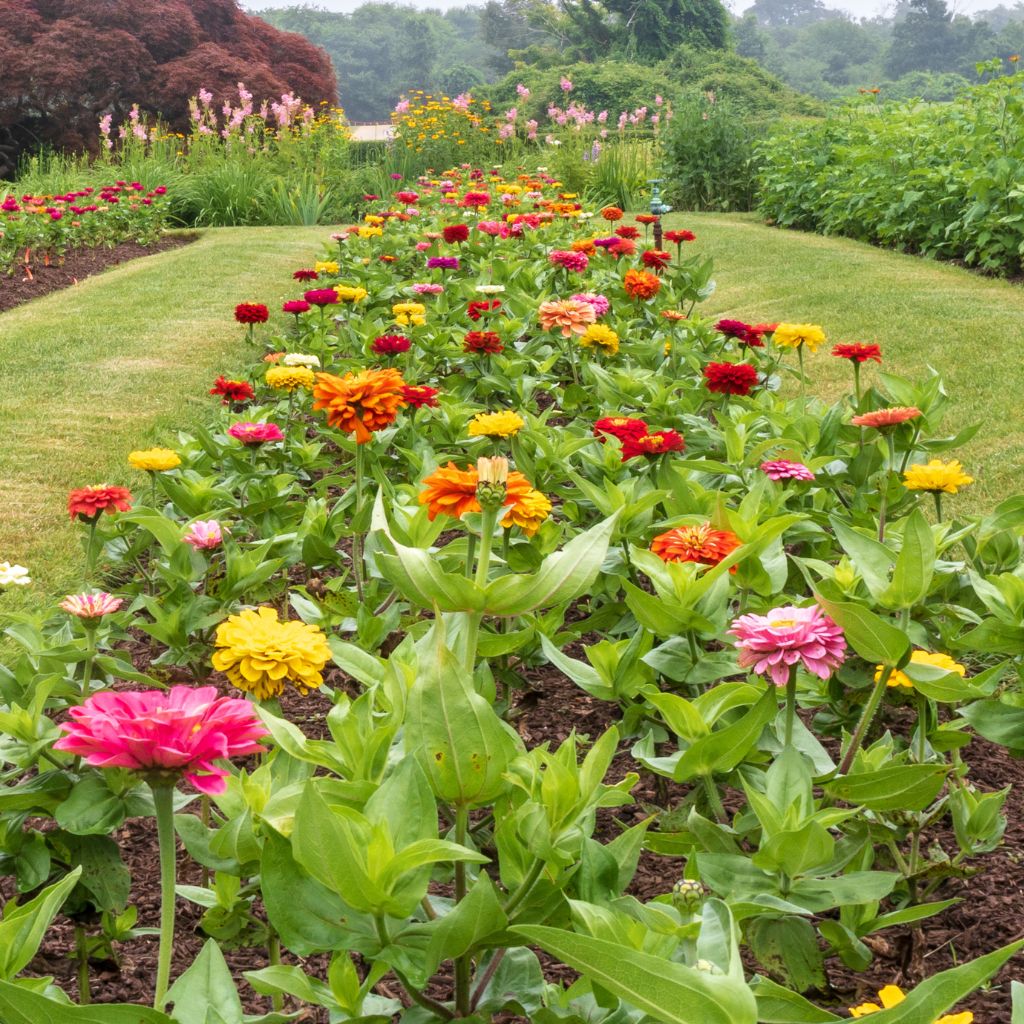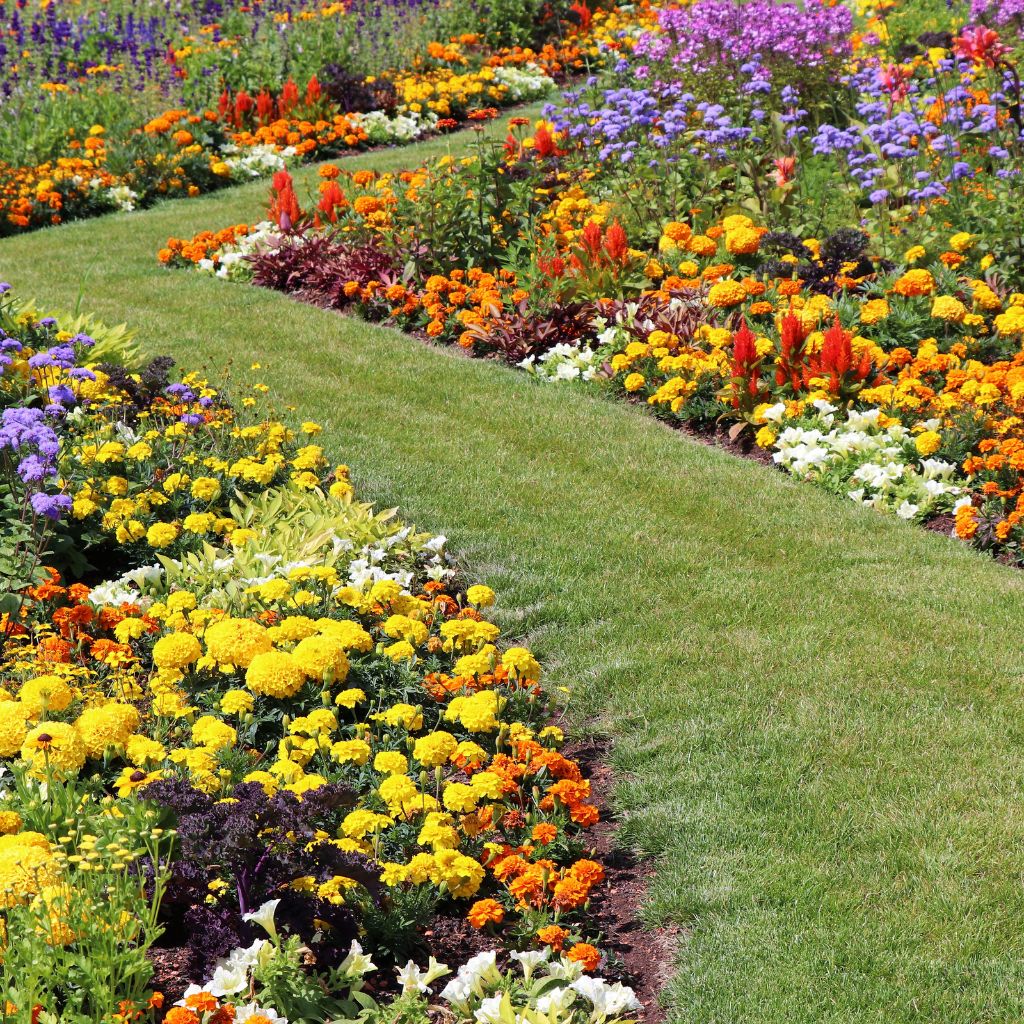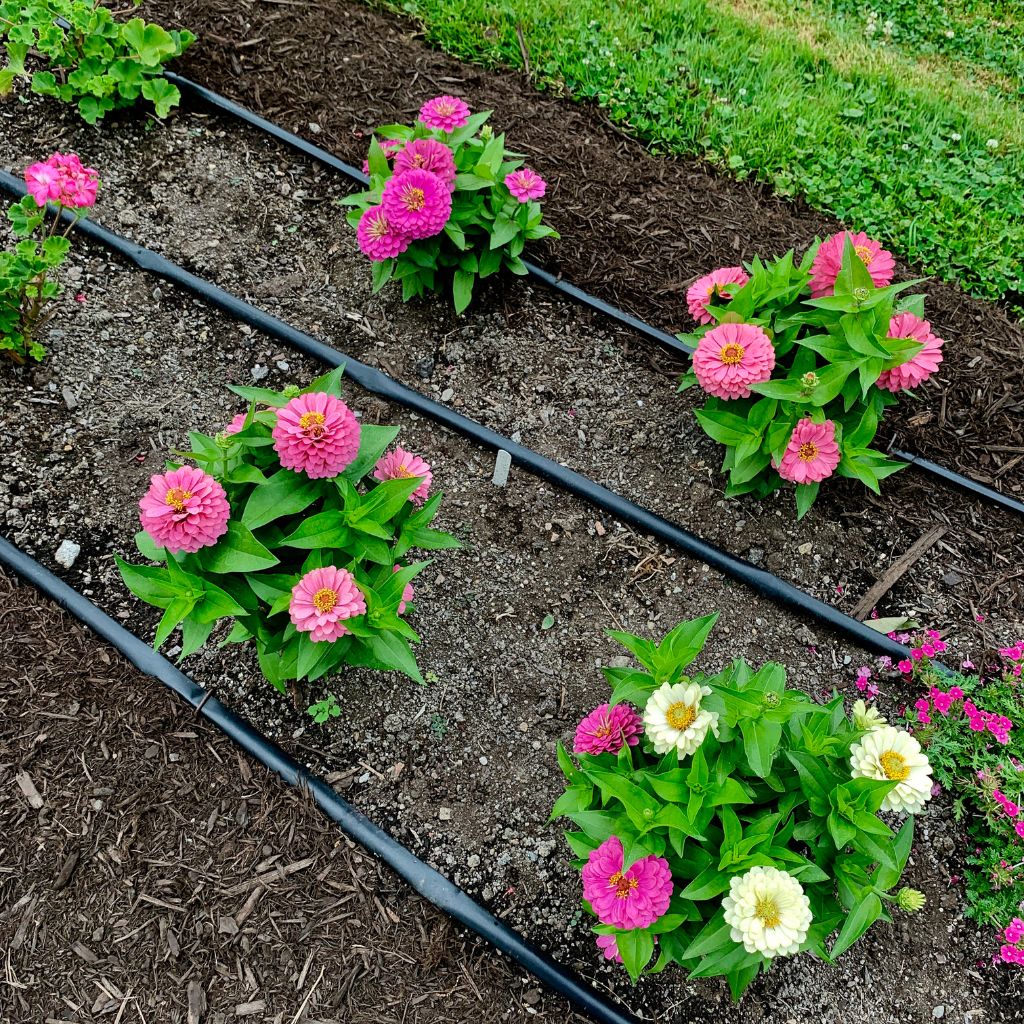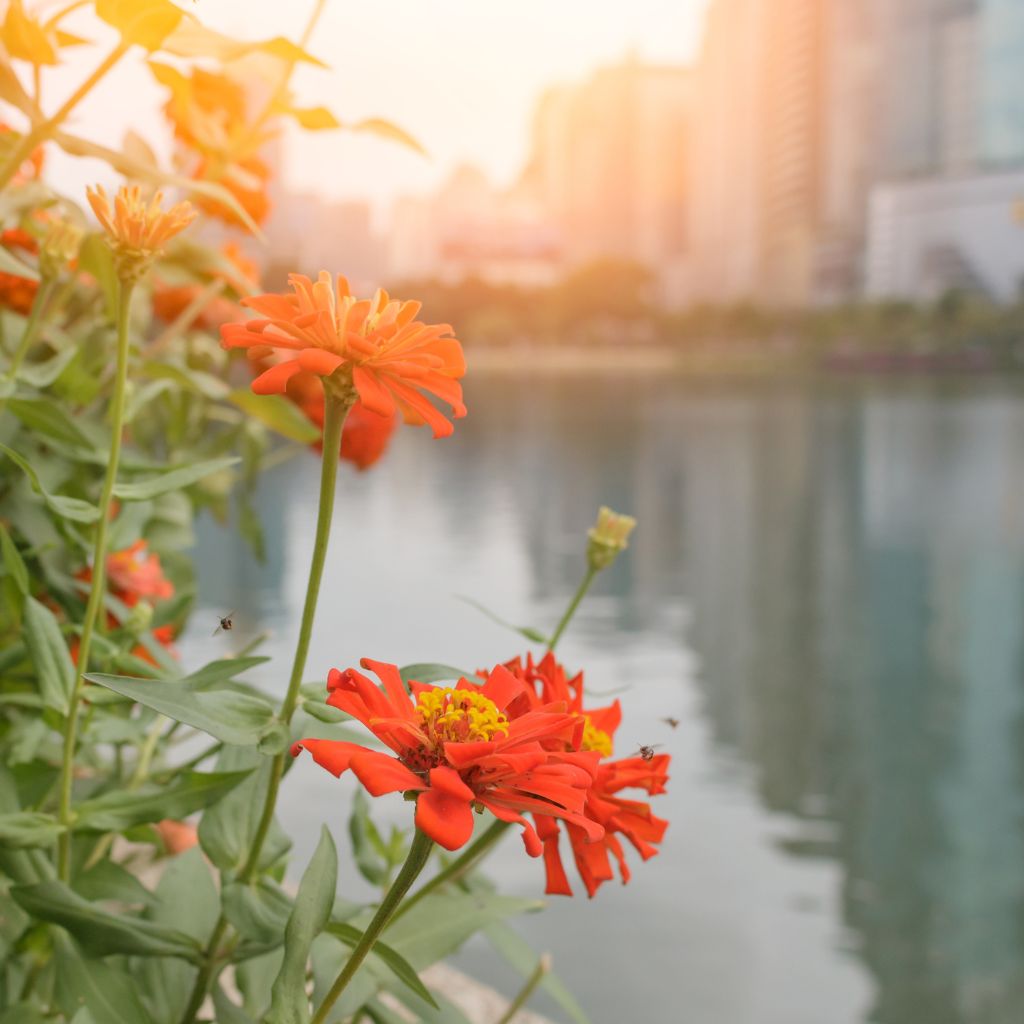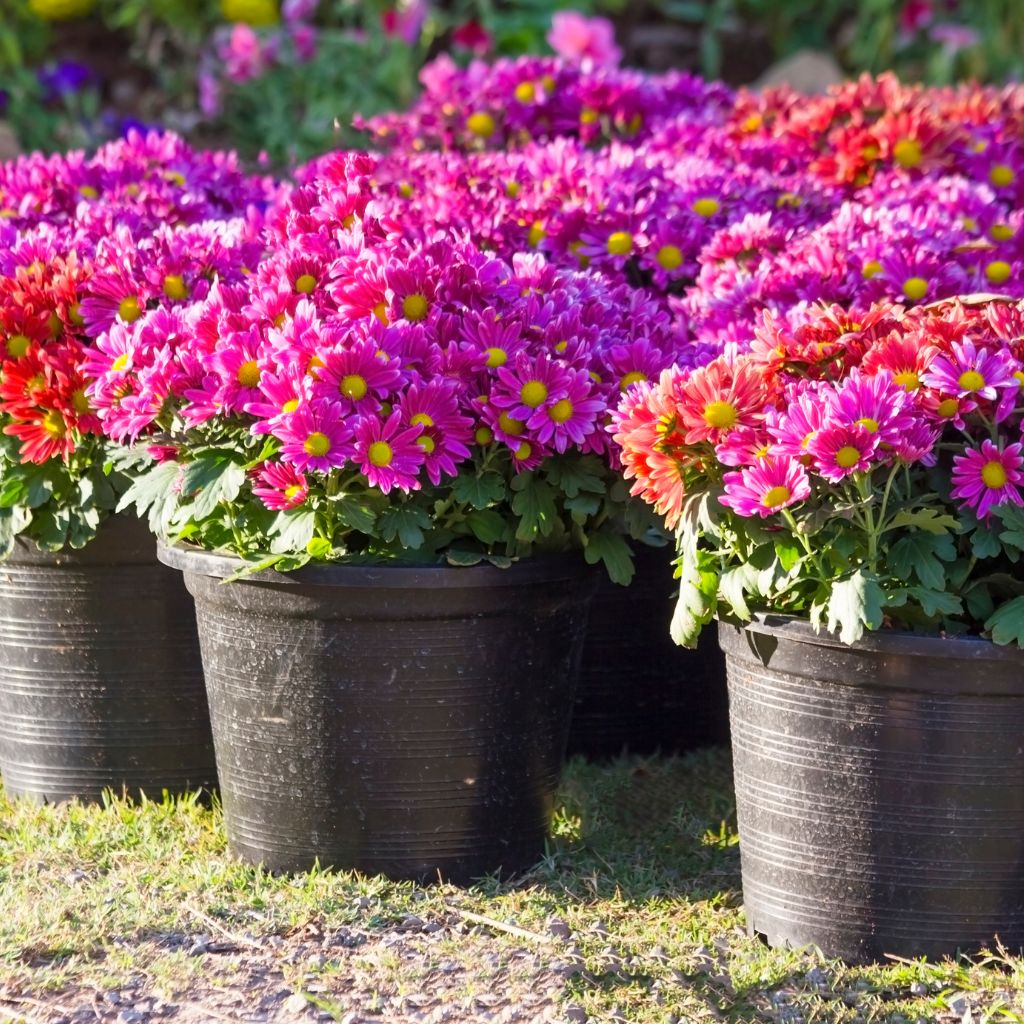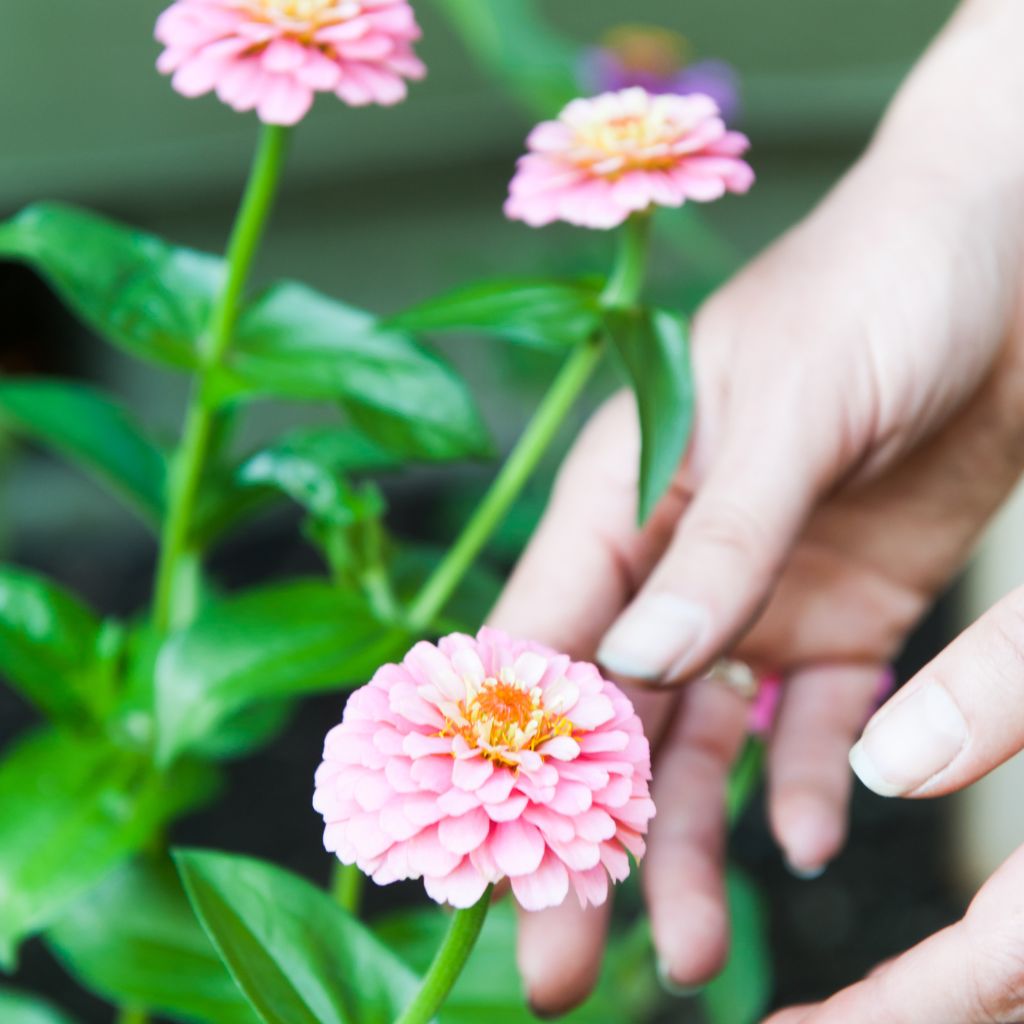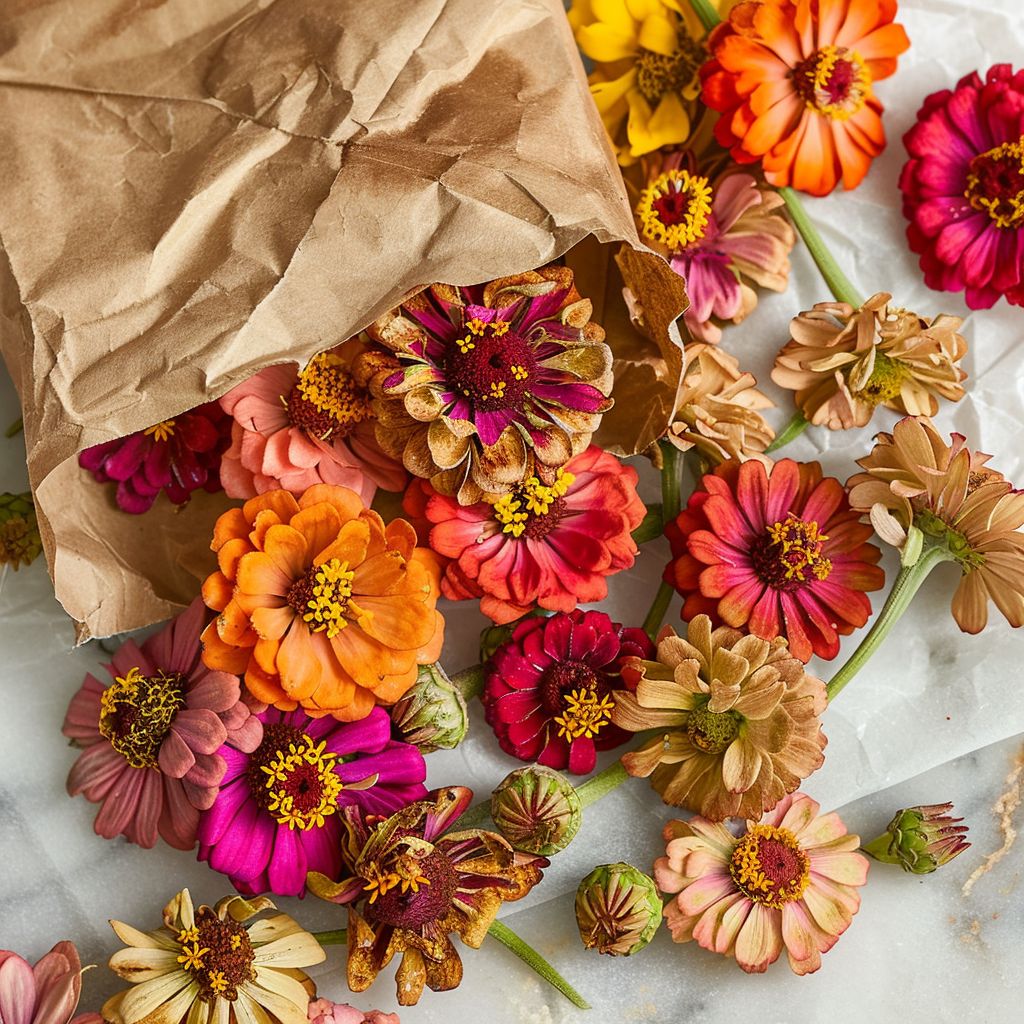When it comes to adding a splash of color and attracting beneficial insects to your garden, zinnias are an unbeatable choice.
Whether you’re a seasoned gardener or just starting out, these vibrant flowers offer a plethora of benefits that can enhance both the aesthetic and ecological value of your garden.
Here’s why every gardener should consider planting zinnias this year.
Zinnias are a versatile flower that can be grown in a variety of settings, from formal gardens to more casual landscapes.
They are also available in a wide range of colors, from bright yellows and oranges to deep reds and purples. This variety makes them an ideal choice for gardeners who want to add some color to their garden without having to worry about matching specific hues.
In addition to their aesthetic appeal, zinnias are also incredibly easy to grow. They require minimal maintenance and can thrive in a variety of soil types and conditions.
This makes them an ideal choice for beginner gardeners or those who are short on time but still want to enjoy the beauty of a blooming garden.
The Vibrant Allure of Zinnias
Zinnias are a popular garden flower that gardeners should consider planting this year. These flowers are known for their vibrant colors and long-lasting blooms, making them an excellent addition to any garden.
1. Color Spectrum and Varieties
Zinnias come in a wide range of colors, from bright yellows and oranges to deep purples and reds. There are also bi-colored varieties, such as the popular ‘Zowie! Yellow Flame’ zinnia, which has bright yellow petals with red tips.
In addition to the variety of colors, zinnias also come in different shapes and sizes. Some popular varieties include the ‘Giant Cactus’ zinnia, which has long, spiky petals, and the ‘Lilliput’ zinnia, which has small, pom-pom-like blooms.
2. Bloom Duration and Resilience
One of the best things about zinnias is their long bloom duration. These flowers can bloom from early summer all the way until the first frost, providing color and beauty to the garden for months on end.
Zinnias are also quite resilient and can tolerate a range of growing conditions. They are drought-tolerant and can handle heat and humidity, making them a great choice for gardeners in hot climates.
Overall, the vibrant allure of zinnias makes them a must-have for any gardener looking to add color and beauty to their garden. With their wide range of colors and varieties, long bloom duration, and resilience, zinnias are a great choice for gardeners of all skill levels.
Environmental Benefits
By planting zinnias, gardeners can help support and promote the growth of these important species.
3. Pollinator Attraction
Zinnias are one of the best flowers to attract pollinators such as bees, butterflies, and hummingbirds. The bright colors and sweet nectar of zinnias make them irresistible to these important pollinators.
By planting zinnias in your garden, you can help support the local ecosystem and promote biodiversity.
4. Companion Planting Advantages
Zinnias are excellent companion plants for many vegetables and herbs. They attract beneficial insects that help control pests and improve soil health.
Planting zinnias with tomatoes, peppers, and beans can help increase yields and improve the overall health of your garden.
5. Pest Management
Zinnias are known to repel certain pests such as aphids, spider mites, and whiteflies. By planting zinnias in your garden, you can help reduce the need for harmful pesticides and promote a healthier, more sustainable garden environment.
In addition to their aesthetic appeal, zinnias offer a range of environmental benefits that make them a valuable addition to any garden.
With their ability to attract pollinators, improve soil health, and repel pests, zinnias are a must-have for any gardener looking to promote a healthy and sustainable garden ecosystem.
Gardening Rewards
Planting zinnias can provide a range of benefits for gardeners, including therapeutic effects and educational opportunities.
6. Therapeutic Effects
Gardening is a relaxing and rewarding activity that can have therapeutic effects on the mind and body. Planting zinnias can be especially beneficial, as their bright colors and beautiful blooms can help reduce stress and anxiety.
Studies have shown that spending time in nature can lower cortisol levels, which is the hormone associated with stress. Gardening can also provide a sense of accomplishment and satisfaction, as well as a connection to the natural world.
7. Educational Opportunities
Planting zinnias can also be a great way to learn about gardening and the natural world. Zinnias are easy to grow and care for, making them a great choice for beginners.
Since they also attract a variety of pollinators, such as bees and butterflies, it can help teach children about the importance of these creatures in our ecosystem.
Gardening can also provide opportunities to learn about plant biology, soil health, and the benefits of composting.
Landscape Design and Aesthetics
8. Garden Themes and Patterns
Zinnias are a versatile flower that can fit into a wide range of garden themes and patterns. They come in a variety of colors, from bright reds and oranges to soft pinks and yellows, making them a great choice for adding pops of color to any garden.
Zinnias can be used in traditional garden designs, such as cottage gardens or formal gardens, as well as in more contemporary designs, such as modern or minimalist gardens.
One way to incorporate zinnias into a garden theme is by choosing a color scheme that complements the existing plants and features.
For example, zinnias in shades of pink and purple can be used to create a romantic garden, while zinnias in bright yellow and orange can add a cheerful touch to a sunny garden.
Another way to use zinnias is by creating patterns with them. Zinnias can be planted in rows or clusters to create a border or accent, or they can be mixed with other flowers to create a tapestry effect.
Mixing different colors and sizes of zinnias can create a dynamic and interesting pattern in the garden.
9. Borders and Accents
Zinnias are a great choice for creating borders and accents in the garden. They can be planted along the edge of a garden bed or used to frame a path or walkway.
Zinnias can also be used to accent other plants or garden features, such as statues, fountains, or seating areas.
When using zinnias as borders or accents, it’s important to consider the height and size of the plants.
Taller zinnias can be used to create a dramatic effect, while shorter zinnias can be used to create a more subtle border or accent. Mixing different sizes and colors of zinnias can create a dynamic and interesting border or accent in the garden.
Overall, zinnias are a versatile and beautiful flower that can add color and interest to any garden. Whether used in traditional or contemporary designs, as accents or borders, zinnias are a must-have for any gardener looking to add some beauty and charm to their outdoor space.
Growing and Caring for Zinnias
Soil Requirements
Zinnias grow best in well-draining, fertile soil. They prefer a slightly acidic soil pH between 5.5 and 7.5. Before planting, it’s recommended to amend the soil with organic matter such as compost or aged manure to improve soil structure and fertility.
Zinnias do not tolerate wet soil, so make sure the soil is well-drained to avoid waterlogging.
Sunlight and Watering Needs
Zinnias thrive in full sun and require at least 6-8 hours of direct sunlight per day. They are drought-tolerant and do not need frequent watering, but they do appreciate consistent moisture.
Overwatering can lead to root rot and other diseases, so it’s important to water zinnias deeply but infrequently. Watering early in the day allows the foliage to dry quickly and reduces the risk of fungal diseases.
Spacing and Planting Depth
Zinnias should be planted at a spacing of 6-18 inches apart, depending on the variety. They can be planted directly into the garden after the last frost or started indoors 4-6 weeks before the last frost.
When planting, make sure to bury the seedlings deep enough so that the first set of leaves are just above the soil surface.
Zinnias have a shallow root system, so avoid planting them too deep as it can lead to stunted growth and poor flowering.
By following these cultivation essentials, gardeners can enjoy a bountiful harvest of vibrant zinnias all season long.
Cutting and Arrangement Tips
Zinnias are known for their long-lasting blooms, making them a popular choice for cut flower arrangements.
When cutting zinnias, it’s important to choose flowers that are fully open but not yet wilting. Cut the stems in the morning, when the plants are fully hydrated, and use sharp scissors or pruning shears to avoid damaging the stem.
Once you’ve cut your zinnias, strip off any leaves that will be below the water line in your vase.
Fill a clean vase with fresh water and add a floral preservative to help extend the life of your blooms. Change the water and trim the stems every few days to keep your zinnias looking fresh.
Seed Collection and Storage
If you want to save zinnia seeds for next year’s garden, wait until the flowers have faded and the seed heads have dried out. Cut the seed heads off the plant and place them in a paper bag to finish drying. Once the seeds are fully dry, shake the bag to release them from the seed heads.
Store your zinnia seeds in a cool, dry place until you’re ready to plant them. Properly stored zinnia seeds can remain viable for up to four years. To ensure good germination rates, plant your zinnia seeds within two years of harvesting them.
With their ease of growth, vibrant variety, and numerous ecological benefits, zinnias are a must-have in any garden. They not only beautify your outdoor space but also support a healthy, thriving ecosystem. So why wait? Add zinnias to your garden this year and enjoy a season filled with color, life, and natural beauty.

